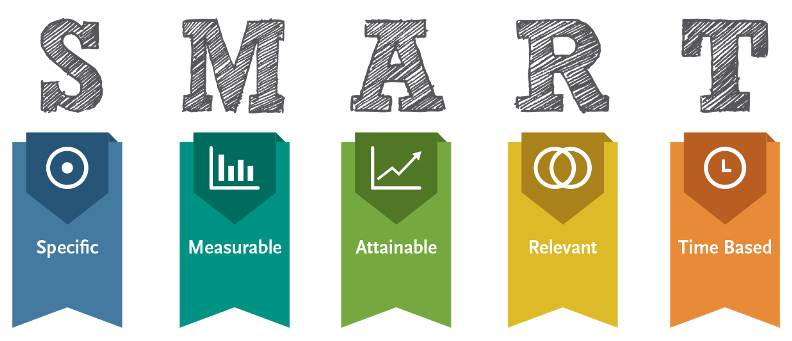A Roadmap to Success:
In the dynamic landscape of digital marketing, setting clear and achievable goals is paramount. A well-defined goal not only provides direction but also acts as a benchmark for measuring success. Whether you are a startup or an established business, having a solid goal-setting strategy can make a significant difference in your marketing efforts. In this blog, we will delve into the essential aspects of digital marketing goal setting and provide a roadmap to help your digital agency achieve success.
Why Set Goals?
Setting goals in digital marketing is crucial for several reasons. First and foremost, goals provide clarity and focus. Without clear objectives, your marketing efforts can become scattered and ineffective. Goals help in aligning your marketing strategies with your overall business objectives, ensuring that every action taken contributes to the bigger picture.
Benefits of Goal Setting:
Direction and Purpose: Goals give your team a clear direction and a sense of purpose, which is essential for maintaining motivation and consistency.
Performance Measurement: With defined goals, you can measure your progress and performance more effectively. This allows for timely adjustments and improvements.
Resource Allocation: Goals help in better allocation of resources, ensuring that time, money, and effort are invested in the most impactful areas.
Enhanced Decision Making: When goals are clear, decision-making becomes more straightforward, as you can easily assess whether a particular strategy or action aligns with your objectives.
SMART Goals:

Specific:
Your goals should be clear and specific. Vague goals can lead to confusion and lack of focus. For instance, instead of setting a goal like “increase website traffic,” specify the target, such as “increase website traffic by 20% in the next three months.”
Measurable:
It’s essential to have measurable goals to track your progress. This involves setting benchmarks and using metrics to assess your performance. For example, if your goal is to improve social media engagement, identify specific metrics such as likes, shares, comments, and followers.
Achievable:
While it’s important to set ambitious goals, they should also be realistic and attainable. Setting unattainable goals can lead to frustration and demotivation. Assess your current resources and capabilities before setting your goals to ensure they are achievable.
Relevant:
Your goals should be relevant to your business objectives and aligned with your overall strategy. For example, if your primary objective is to increase sales, your marketing goals should focus on strategies that drive conversions and generate leads.
Time-Bound:
Every goal needs a deadline. Having a time frame creates a sense of urgency and helps in prioritizing tasks. For instance, set a goal like “increase email subscribers by 15% in the next six months” to ensure timely execution and evaluation.
Types of Digital Marketing Goals

Awareness Goals:
Awareness goals focus on increasing the visibility of your brand. This includes metrics such as website traffic, social media reach, and brand mentions. Strategies to achieve awareness goals include content marketing, social media campaigns, and SEO.
Engagement Goals:
Engagement goals aim to foster interaction and build relationships with your audience. Key metrics include likes, shares, comments, and time spent on your website. Tactics such as interactive content, engaging social media posts, and personalized email marketing can help achieve these goals.
Conversion Goals:
Conversion goals are centered around turning prospects into customers. Metrics for conversion goals include conversion rate, number of leads generated, and sales. Effective strategies include optimizing landing pages, implementing strong calls-to-action, and running targeted ad campaigns.
Retention Goals:
Retention goals focus on keeping existing customers engaged and encouraging repeat business. Metrics include customer lifetime value, repeat purchase rate, and customer satisfaction scores. Loyalty programs, personalized follow-up emails, and excellent customer service are strategies that support retention goals.
Steps to Effective Goal Setting

Conduct a SWOT Analysis:
Before setting your goals, conduct a SWOT analysis (Strengths, Weaknesses, Opportunities, Threats) to understand your current position. This analysis helps in identifying areas where you can leverage your strengths and opportunities, and address weaknesses and threats.
Define Your Target Audience:
Knowing your target audience is crucial for setting relevant and achievable goals. Understand their needs, preferences, and behaviors to tailor your marketing strategies effectively.
Set Priorities:
Not all goals are created equal. Prioritize your goals based on their impact on your business objectives. Focus on high-impact goals that align with your strategic priorities.
Develop an Action Plan:
Outline the steps required to achieve each goal. This includes defining specific tasks, assigning responsibilities, and setting deadlines. An action plan provides a clear roadmap and ensures accountability within your team.
Monitor and Adjust:
Regularly monitor your progress towards your goals. Use analytics and performance metrics to track your success and identify areas for improvement. Be flexible and ready to adjust your strategies based on the insights gained.
Conclusion:
Setting clear and actionable digital marketing goals is the foundation of a successful marketing strategy. By following the SMART framework and focusing on different types of goals, your digital agency can achieve measurable results and drive business growth. Remember, goal setting is not a one-time activity but an ongoing process that requires regular review and adjustment. Stay focused, stay flexible, and keep striving towards your goals for sustained success in the digital landscape.

